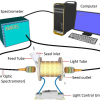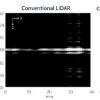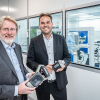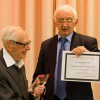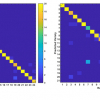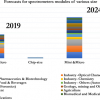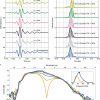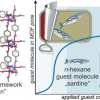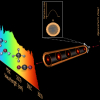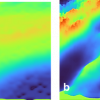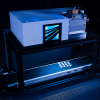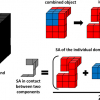Infrared Spectroscopy News
Research involving two-dimensional semiconductors has led to an ultra-tiny spectrometer that fits on a microchip and is operated using artificial intelligence.
A high-throughput single-grain quality NIR detection platform has helped evaluate the eating quality of hybrid rice.
Combines photothermal spectroscopy and lidar, resolving chemical information by detecting sub-nm surface deformations due to photothermal absorption of a pump laser.
AgroCares are to use trinamiX’s handheld NIR spectrometer in their next Nutrient Scanner solution.
Nominations for the IRDG’s 2022 Norman Sheppard Award are invited.
Professor Kerry Walsh is to receive the prestigious ANISG Tony Blakeney Award for 2022.
THe first transmission spectrum made from a single observation using Webb’s Near-Infrared Imager and Slitless Spectrograph (NIRISS) reveals atmospheric characteristics of the hot gas giant exoplanet WASP-96 b.
A Chinese team has developed a new algorithm for near infrared spectroscopy, suitable for high-throughput identification of the authenticity of crop varieties.
Infrared and Raman spectroscopy have been used to identify lysine acetylation features, which provided a theoretical and experimental basis for the analysis of protein acetylation structures in biological systems.
A review of and prediction for the development of chip-based optical spectrometers.
An international team of laser physicists of the attoworld team at LMU and the Max Planck Institute of Quantum Optics has achieved unprecedented control over light pulses in the mid-infrared wavelength range.
The Gordon F. Kirkbright and Edward Steers awards are seeking nominations.
A spectrometer is being used to measure the MOF and guest molecule absorbance of two differently polarised types of infrared light, enabling the first measurement of both guest–guest and guest–host interactions in real-time.
The first local managing director for Shimadzu Denmark, Joachim Holm, has been appointed.
A type of optical fibre with a refractive index that varies continuously across the fibre structure has been shown to yield a dramatic increase in supercontinuum power, while still preserving a smooth beam intensity profile.
Computational imaging technologies have substantially reduced the costs of imaging systems and at the same time significantly improved their performances. Use of a Lucy-Richardson-Rosen computational reconstruction method with infrared microspectroscopy has produced 3D images.
The Awards Committee of the Council for Near-Infrared Spectroscopy (CNIRS) is requesting nominations and submissions for four award categories.
Fraunhofer IAF has developed an integrable measurement system which uses machine vision to detect samples and verify them using laser-based infrared spectroscopy.
Serial sectioning of pharmaceutical tablets with spectral mapping has enabled full visualisation of the three-dimensional (3D) microstructure of a tablet system to be achieved.
Si-Ware has announced a partnership with NutriControl Analytical Solutions, a laboratory network based in the Netherlands serving the animal feed, dairy and food sectors.


